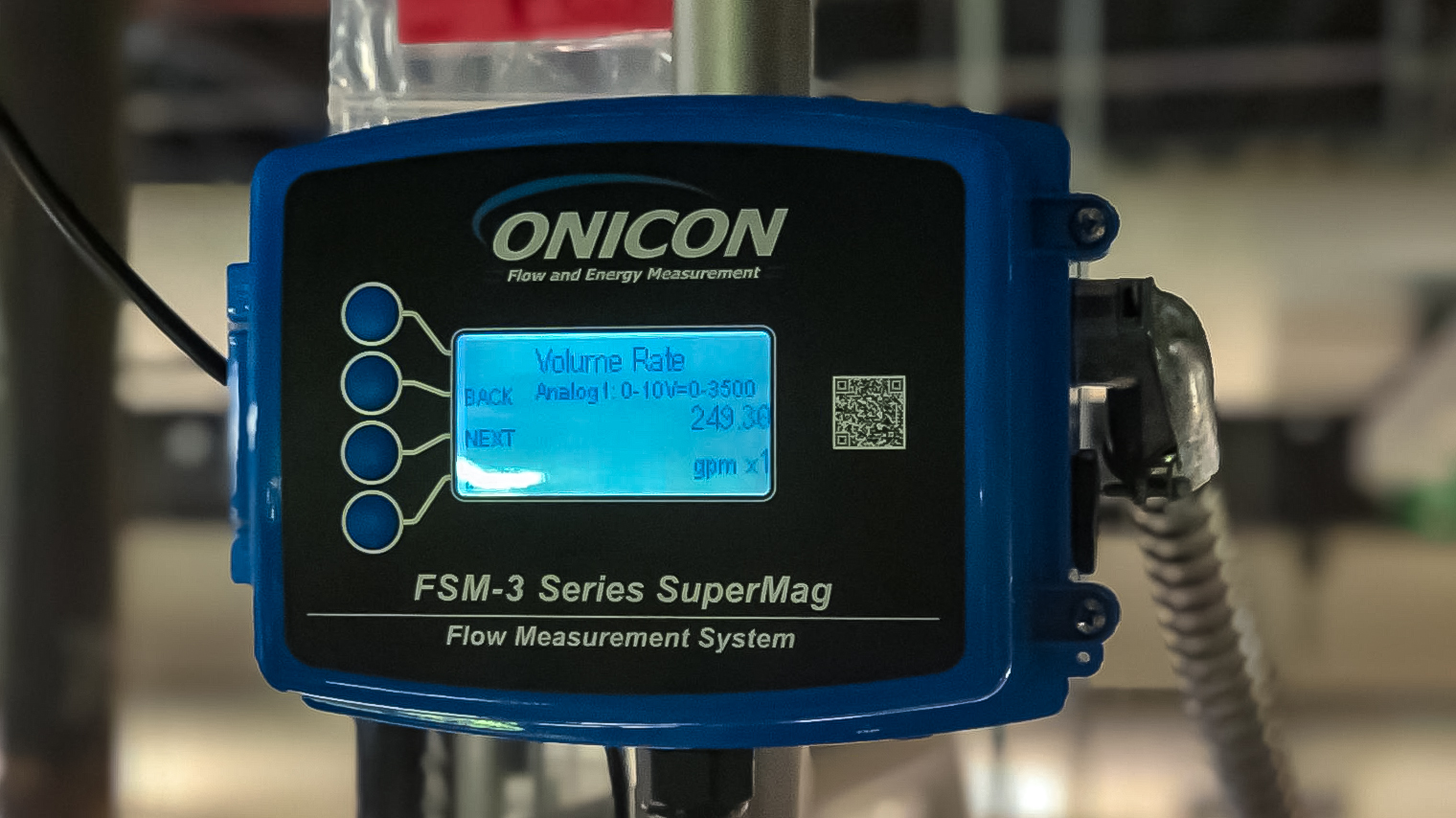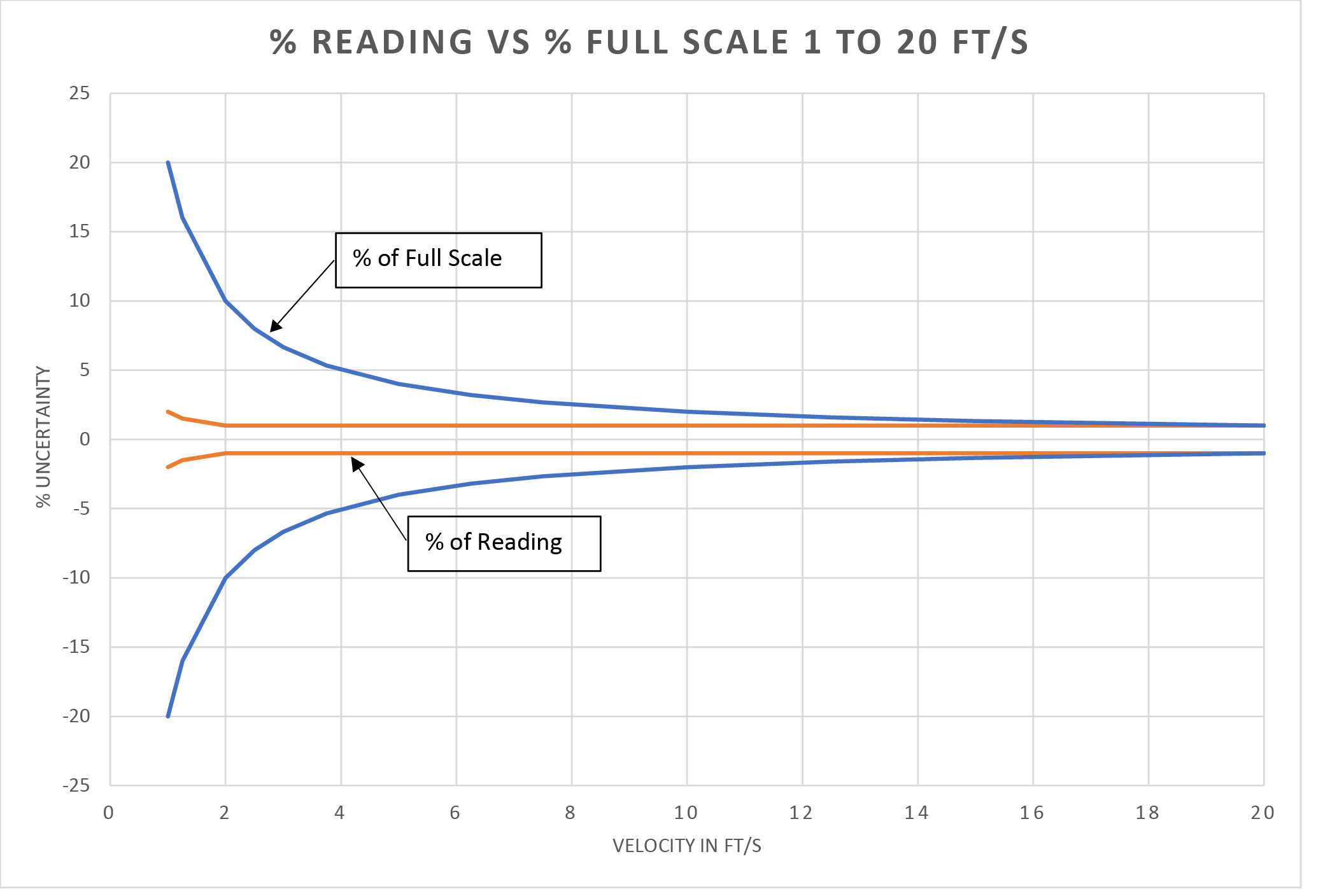
One of the key elements in selecting the right flow meter is measurement accuracy. For example, what does it mean when a flow meter has a published accuracy of ±1%? In order to fully understand this, you must understand the three variables that make up a complete accuracy statement. If any of the three are missing, the accuracy statement is not complete, and the flow meter may not perform as expected. Understanding the accuracy statement is an important part of choosing the right meter for your application.
A valid accuracy statement consists of three components, all of which are necessary for the statement to be meaningful:
1. Measurement uncertainty
2. Reference for the measurement uncertainty
3. Operating range over which the accuracy is specified
Measurement Uncertainty
Measurement uncertainty describes how much deviation you can expect when compared to the true measurement value. It is normally expressed as a percentage and is often described as the percent accuracy. The uncertainty may be greater or less than the true value and is normally preceded by a plus/minus (±) to indicate that it is equally distributed around the true value.
Reference For The Measurement Uncertainty
Measurement uncertainty percentages can be described (referenced) in two ways.
The first way is to describe the uncertainty as a percentage of the reading or percentage of rate. In this case, the true value will be some percentage greater or less than the indicated value. For example, an accuracy of ±1% of reading applied to a measurement of 100 would mean that the true value is anywhere from 99 and 101.
The second way to describe uncertainty percentage is to reference it to the maximum, or full scale (fs), value. This is often referred to as percentage of full scale or span. In this case, uncertainty is a function of the largest possible (full scale) measurement value. This is a fixed uncertainty value that is applied to any reading. Take the example above, a measurement of 100 and apply ±1% of span. This would result in a true value of 99 to 101, only if the full scale value was also 100. Increase the full scale value to 1000 and the true value for the reading of 100 would now be any value between 90 to 110.
As you can see, how the percentage is referenced is very important. Unless stated, you should not assume that the uncertainty is a percentage of the reading.
Percentage of full scale or span flow meters may be OK for some applications. This type of meter provides reasonable accuracy in those applications where there is relatively constant flow at or near the full scale value. They are NOT suitable for variable flow applications or any application where accurate low flow measurements are required.
Operating Range Over Which The Accuracy Is Specified
Flow meters may have more than one published operating range. An overall operating range is often given that provides the user with the lowest and highest flows the meter can reproducibly measure. While reproducible, flow measurements at extreme operating limits may not be very accurate. For this reason, an operating range needs to be included that specifies when the stated accuracy can be applied to the measurement.
For % of reading meters this operating range is very straightforward. Any measurement falling within the operating range will be subject to the % uncertainty.
For % of full scale or span meters, this is more complicated. The full scale limit will almost always be less than the maximum operating limit described with the accuracy statement. This is done by the user to limit the maximum error. In effect, the operating range for the accuracy statement of % of full scale meters is minimum to full scale. The example below illustrates the difference in performance between two meters with what seems to be similar accuracy statements.

For many HVAC applications, such as tenant billing, cost allocation, and custody transfer, accuracy of your flow measurement is extremely important. When looking at your flow measurement options, make sure that all three of these components are present in the accuracy statements for the flow meters in consideration to help guarantee that the meter you choose performs as advertised.
ONICON manufactures flow and BTU meters for HVAC applications. Visit our product page for more about our line of highly accurate and reliable flow measurement solutions.
Download This Document COVID-19 RESPONSE
COVID-19 RESPONSE